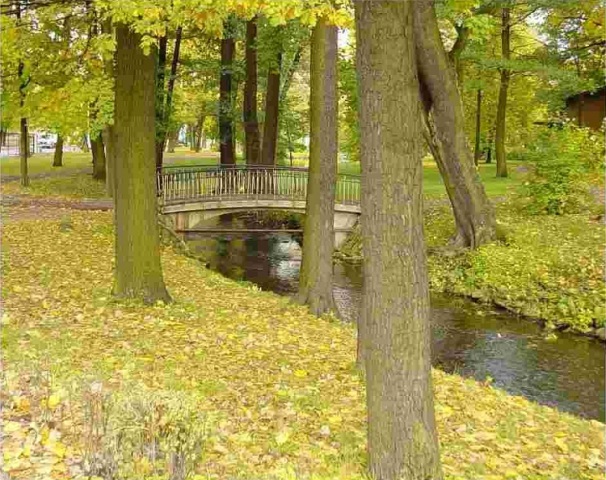Latvia is a small picturesque & serene country located in northern Europe. Read this article to know fun and interesting facts about Latvia.
Facts About Latvia
Latvia is a country in Northern Europe, which is officially known as the Republic of Latvia. Though a small country, Latvia has a long and ancient history. A person touring Latvia will be mightily impressed by the region’s rich culture along with the many interesting tourist spots. It is one of the least densely populated countries of the European Union. Apart from the somber Gulf of Riga and the open Baltic Sea, Latvia also boasts of nature parks, torrid rivers and lakes with lovely forests lining the shores. The various old and new churches at Latvia too are worth a visit. Health centers, outdoor recreation, festivities – Latvia has so much to offer! Latvia is among those few countries where more than half of land is covered by forests. But the interesting part is that amidst these forests reside a number of farming fields. Yes, it is true that these vast forests have farmsteads and pastures dotted all over them. Read the information given below to know more fun and interesting facts about Latvia. 

Image: Tahbepet@flickr
Fast Facts
Continent: Europe
Area: 64,589 km2
Capital: Riga
Population: 2,220,000 (2011)
Currency: Lats
Official Languages: Latvian
Type Of Government: Parliamentary Republic
Interesting Facts about Latvia
- Latvia, along with the neighboring countries Estonia and Lithuania is known as the Baltic States. The concept of ‘Baltic States’ as implying some sort of political unison among Lithuania, Latvia and Estonia is untrue and therefore confusing.
- The longest river of Latvia is the Daugava, whereas its largest lake is Lake Lubana.
- Historically, Latvia is known by the name Lettland. Lettland gets its name from the natives ‘Letts’ or the Lettish people.
- Riga Castle was constructed for the Livonian Order of Knights in 1330. In the present time, the Riga Castle is the official home of the President of Latvia.
- The capital of Latvia, Riga is famous for some of the best Art Nouveau architecture in Europe.
- In the 17th Century, Tobago, one of the two Caribbean islands comprising the Republic of Trinidad and Tobago, was temporarily a colony of the Duchy of Courland which is now a part of Latvia.
- The Basilica of Our Lady of Aglona is a popular pilgrimage place at Latvia. The Basilica houses the icon of Our Lady of Aglona that is said to be responsible for miracles.
- Riga Polytechnikum, the Riga Technical University, was set up in 1862.
- In 1919, the University of Latvia was founded.
- Vilhelm Ostwald of Riga was awarded the Nobel Prize for Chemistry in 1909.
- Latvian Fridrich Cander (1887-1933) was an inventor who worked on the theory and design of jet engines and rockets.
- During th e German occupation of Latvia during the Second World War, most of its Jewish populace was put in concentration camps.
- Thousands of Letts were put behind bars or exiled to Siberia all through the Russian occupation of Latvia in 1941 and the post war Soviet occupation of Latvia.
- Latvia was annexed by the Soviet Union before it gained independence on August 21, 1991.
- The Baltic States wanted to demonstrate their desire for freedom in 1989. As such, the Estonians, Latvians and Lithuanians joined hands forming a long human chain stretching from Tallinn to Riga to Vilnius.
- On 1 May 2004, Latvia became a member of the European Union.
- After Finland, Sweden and Slovenia, Latvia has the 4th highest portion of land covered by forests in the European Union.
- The forests of Latvia are refuge for many rare species of plants and animals which are not found in other parts of Europe. For instance the rare black stork.
- In terms of Environmental Performance Index Latvia ranks second in the world.
- The national anthem of Latvia is titled ‘God Bless Latvia’.
- Latvia was one of the fastest growing economies of Europe before the crisis of 2008.
- The currency of Latvia is lats (LVL) and one lats consists of 100 santims.
See also
More from iloveindia.com
- Home Remedies | Ayurveda | Vastu | Yoga | Feng Shui | Tattoos | Fitness | Garden | Nutrition | Parenting | Bikes | Cars | Baby Care | Indian Weddings | Festivals | Party ideas | Horoscope 2015 | Pets | Finance | Figures of Speech | Hotels in India : Delhi | Hyderabad | Chennai | Mumbai | Kolkata | Bangalore | Ahmedabad | Jaipur
- Contact Us Careers Disclaimer Privacy Policy Advertise With Us Lifestyle Sitemap Copyright iloveindia.com. All Rights Reserved.







